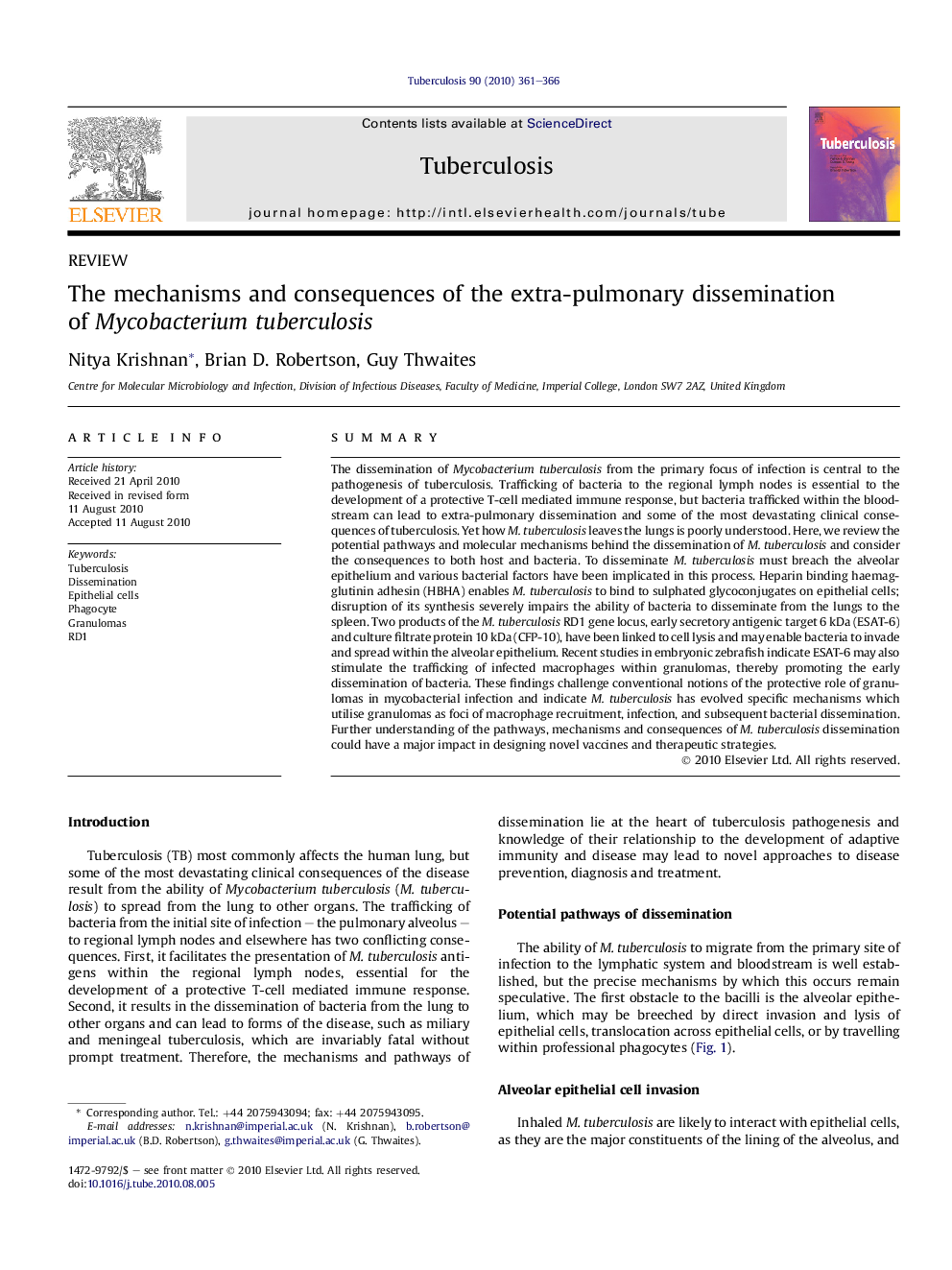| کد مقاله | کد نشریه | سال انتشار | مقاله انگلیسی | نسخه تمام متن |
|---|---|---|---|---|
| 2401681 | 1551712 | 2010 | 6 صفحه PDF | دانلود رایگان |

SummaryThe dissemination of Mycobacterium tuberculosis from the primary focus of infection is central to the pathogenesis of tuberculosis. Trafficking of bacteria to the regional lymph nodes is essential to the development of a protective T-cell mediated immune response, but bacteria trafficked within the bloodstream can lead to extra-pulmonary dissemination and some of the most devastating clinical consequences of tuberculosis. Yet how M. tuberculosis leaves the lungs is poorly understood. Here, we review the potential pathways and molecular mechanisms behind the dissemination of M. tuberculosis and consider the consequences to both host and bacteria. To disseminate M. tuberculosis must breach the alveolar epithelium and various bacterial factors have been implicated in this process. Heparin binding haemagglutinin adhesin (HBHA) enables M. tuberculosis to bind to sulphated glycoconjugates on epithelial cells; disruption of its synthesis severely impairs the ability of bacteria to disseminate from the lungs to the spleen. Two products of the M. tuberculosis RD1 gene locus, early secretory antigenic target 6 kDa (ESAT-6) and culture filtrate protein 10 kDa (CFP-10), have been linked to cell lysis and may enable bacteria to invade and spread within the alveolar epithelium. Recent studies in embryonic zebrafish indicate ESAT-6 may also stimulate the trafficking of infected macrophages within granulomas, thereby promoting the early dissemination of bacteria. These findings challenge conventional notions of the protective role of granulomas in mycobacterial infection and indicate M. tuberculosis has evolved specific mechanisms which utilise granulomas as foci of macrophage recruitment, infection, and subsequent bacterial dissemination. Further understanding of the pathways, mechanisms and consequences of M. tuberculosis dissemination could have a major impact in designing novel vaccines and therapeutic strategies.
Journal: Tuberculosis - Volume 90, Issue 6, November 2010, Pages 361–366